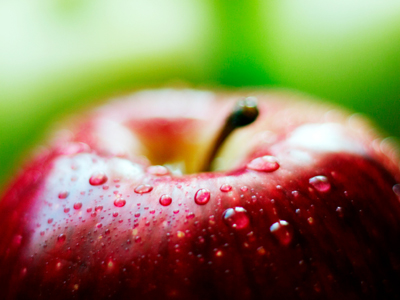
Ask the AI Tutor
Need help with Apostrophes (Because of Omission) 01? Ask our AI Tutor!
AI Tutor - Lucy
Connecting with Tutor...
Please wait while we establish connection

It's an apple. This is the correct use of an apostrophe - it's means the same as it is.
Apostrophes (Because of Omission) 01
Apostrophes show missing letters in contractions. Learn to spot we’re, you’re, they’re and avoid confusing it’s with its. Practise clear, correct writing.
1 .
Contract the following pair of words into one.
They would.
They would.
Theyd
They'd
The'yld
They'ld
Similar contractions are "I'd", for "I would", and "she'd" for "she would" or "she had"
2 .
Contract the following pair of words into one.
Must not.
Must not.
Mustnot
Mus'tnt
Must'nt
Mustn't
How often do you use the word "mustn't"?
3 .
Contract the following pair of words into one.
Would not.
Would not.
Wouldnot
Would'not
Would'nt
Wouldn't
Similarly, "can not" becomes "can't" and "could not" becomes "couldn't"
4 .
Contract the following pair of words into one.
Are not.
Are not.
Are'not
Arent
Are'nt
Aren't
Always place the apostrophe where the letter or letters are omitted
5 .
Contract the following pair of words into one.
They have.
They have.
Theyave
Theyh've
The'yve
They've
Two letters are omitted here: they have becomes "they've"
6 .
Contract the following pair of words into one.
I have.
I have.
I'hve
Ive
I've
Iv'e
Similarly, "you have" becomes "you've" and "we have" becomes "we've"
7 .
Contract the following pair of words into one.
It is.
It is.
It is
Its
It's
Its'
Be careful not to confuse "it's", which means "it is", with "its", which is the possessive of "it"
8 .
Contract the following pair of words into one.
Does not.
Does not.
Doesnot
Does'not
Does'nt
Doesn't
The apostrophe is not placed between the two words!
9 .
Contract the following pair of words into one.
Should not.
Should not.
Shouldnot
Should'not
Should'nt
Shouldn't
Use the apostrophe only where the letters are omitted!
10 .
Contract the following pair of words into one.
Who is.
Who is.
Whois
Who's
Whos'
Whose
Be careful not to confuse "who's", which means "who is", with "whose", which is the possessive of "who"
You can find more about this topic by visiting BBC Bitesize - How to check your apostrophes are correct
**Unlimited Quizzes Await You! 🚀**
Hey there, quiz champ! 🌟 You've already tackled today's free questions.
Ready for more?
Ready for more?
🔓 Unlock UNLIMITED Quizzes and challenge yourself every day. But that's
not all...
not all...
🔥 As a Subscriber you can join our thrilling "Daily Streak" against other
quizzers. Try to win a coveted spot on our Hall of Fame Page.
quizzers. Try to win a coveted spot on our Hall of Fame Page.
Don't miss out! Join us now and keep the fun rolling. 🎉
**Unlimited Quizzes Await You! 🚀**
Hey there, quiz champ! 🌟 You've already tackled today's free questions. Ready for more?
🔓 Unlock UNLIMITED Quizzes and challenge yourself every day. But that's not all...
🔥 As a Subscriber you can join our thrilling "Daily Streak" against other quizzers. Try to win a coveted spot on our Hall of Fame Page.
Don't miss out! Join us now and keep the fun rolling. 🎉






